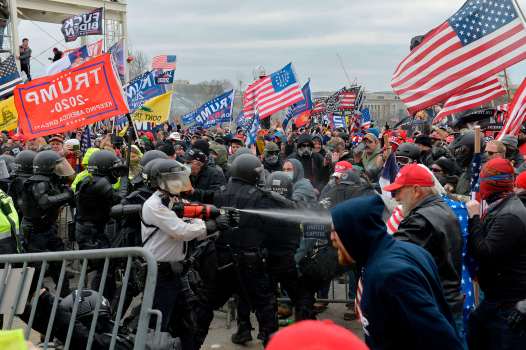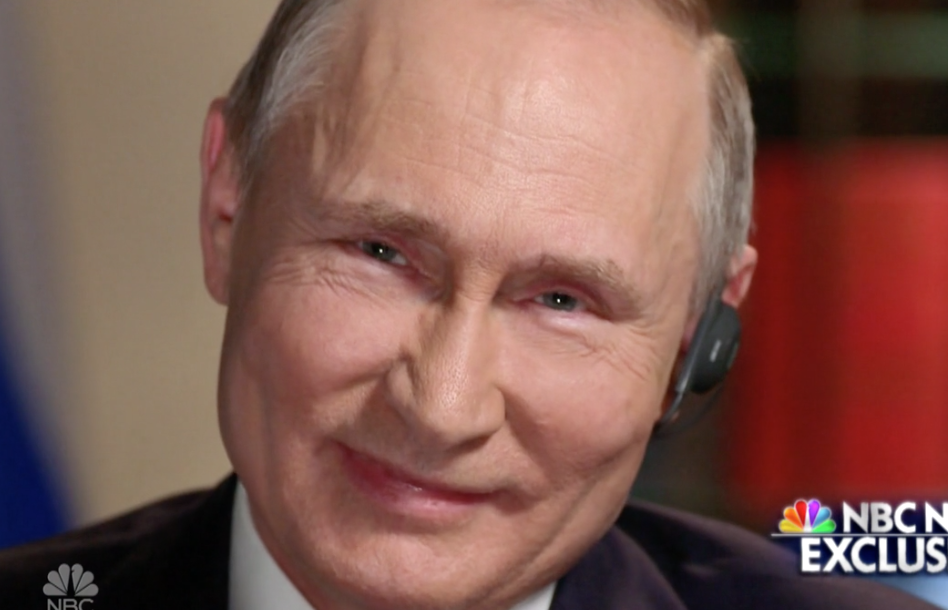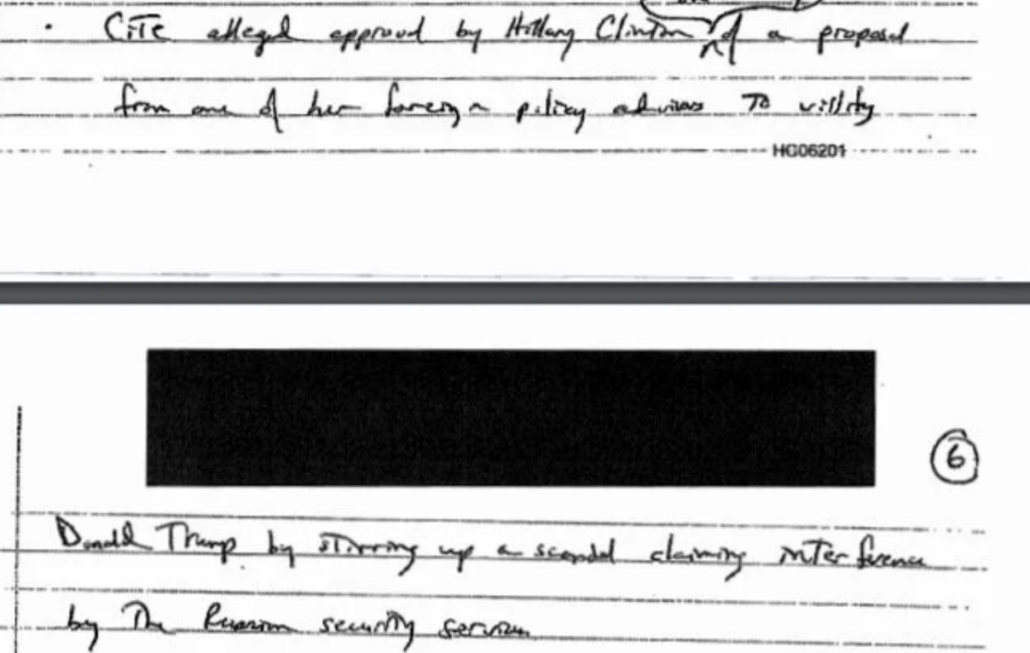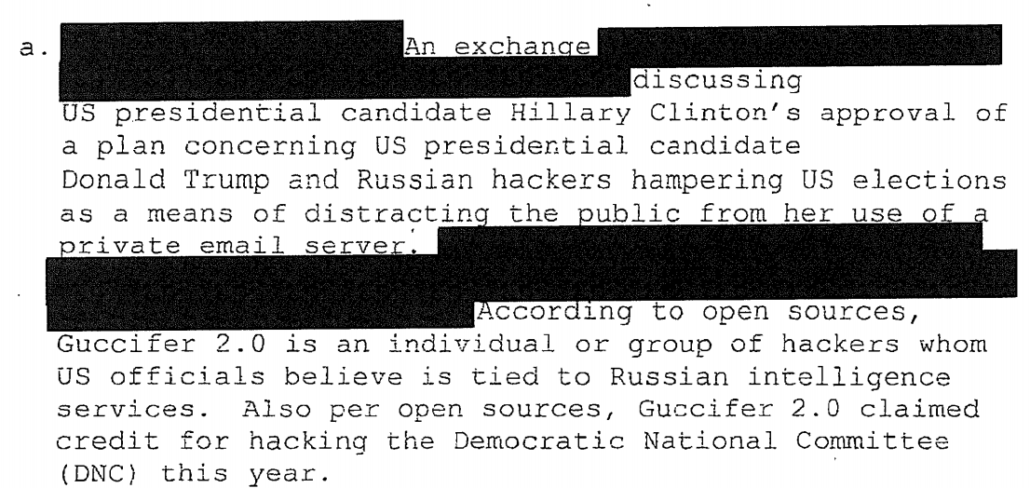Chain of Command: The AWOL Descriptions of the Commander in Chief’s Role in the National Guard Non-Response on January 6
The only formal explanation Trump has offered to describe his role in deploying the National Guard in response to the attack on the Capitol on January 6 came in his impeachment defense. As part of that defense, Bruce Castor pointed to things he claimed happened before Trump’s speech ended. In Castor’s inaccurate portrayal of the timeline, he suggested that the first action Acting Secretary of Defense Christopher Miller took was when, at 1:05 (which Castor said was 11:05), Miller “received open source reports of demonstrator movements to the U.S. Capitol.” He continued to claim that,
At 1:09 PM, US Capitol Police Chief’s Steven Sund called the House and Senate Sergeants at Arms, telling them he wanted an emergency declared and he wanted the National Guard called. The point: given the timeline of events, the criminals at the Capitol were not there to even hear the President’s words. They were more than a mile away engaged in a preplanned assault on this very building.
Admittedly, this was probably no more than an incompetent parroting of the existing timeline released by DOD. It’s possible that Trump’s lawyers didn’t ask him what happened inside the White House that day, because if they did, it would not help their case.
Still: Trump’s own defense claimed that the first that Acting Secretary Miller did in the matter was at 1[1]:05 on January 6.
That’s mighty interesting because there have been two claims that Trump proactively offered up National Guard troops for January 6 in the days beforehand. The first came in a Vanity Fair piece written by a journalist that Trump’s DOD flunkies permitted to embed with them (he requested to do so before the insurrection, but didn’t start his embed until January 12, meaning the claims reported in this article were retrospective). That piece claimed that, the night before the attack, Trump told DOD they would need 10,000 people.
The president, Miller recalled, asked how many troops the Pentagon planned to turn out the following day. “We’re like, ‘We’re going to provide any National Guard support that the District requests,’” Miller responded. “And [Trump] goes, ‘You’re going to need 10,000 people.’ No, I’m not talking bullshit. He said that. And we’re like, ‘Maybe. But you know, someone’s going to have to ask for it.’” At that point Miller remembered the president telling him, “‘You do what you need to do. You do what you need to do.’ He said, ‘You’re going to need 10,000.’ That’s what he said. Swear to God.”
[snip]
“We had talked to [the president] in person the day before, on the phone the day before, and two days before that. We were given clear instructions. We had all our authorizations. We didn’t need to talk to the president. I was talking to [Trump’s chief of staff, Mark] Meadows, nonstop that day.”
[snip]
What did Miller think of the criticism that the Pentagon had dragged its feet in sending in the cavalry? He bristled. “Oh, that is complete horseshit. I gotta tell you, I cannot wait to go to the Hill and have those conversations with senators and representatives.”
[snip]
Miller and Patel both insisted, in separate conversations, that they neither tried nor needed to contact the president on January 6; they had already gotten approval to deploy forces. However, another senior defense official remembered things quite differently, “They couldn’t get through. They tried to call him”—meaning the president.
So according to Acting Secretary of Defense Christopher Miller, Trump had given him “clear instructions” to “do what you need to do,” and had warned him to have thousands of Guardsmen available. Miller said he was speaking non-stop to Mark Meadows, though an anonymous source stated that they tried but failed to get the President on the line.
Long after impeachment and even after his CPAC speech, Trump went to Fox to make the same claim that appeared in Vanity Fair.
Former President Trump told Fox News late Sunday that he expressed concern over the crowd size near the Capitol days before last month’s deadly riots and personally requested 10,000 National Guard troops be deployed in response.
Trump told “The Next Revolution With Steve Hilton” that his team alerted the Department of Defense days before the rally that crowds might be larger than anticipated and 10,000 national guardsmen should be ready to deploy. He said that — from what he understands — the warning was passed along to leaders at the Capitol, including House Speaker Nancy Pelosi — and he heard that the request was rejected because these leaders did not like the optics of 10,000 troops at the Capitol.
“So, you know, that was a big mistake,” he said.
Fox and other Trump mouthpieces have suggested that Nancy Pelosi rejected the Guard. That’s false. According to then Capitol Police Chief Steve Sund, House Sergeant at Arms Paul Irving did.
On Monday, January 4, I approached the two Sergeants at Arms to request the assistance of the National Guard, as I had no authority to do so without an Emergency Declaration by the Capitol Police Board (CPB). My regular interactions with the CPB, outside of our monthly meetings regarding law enforcement matters, were conducted with the House and Senate Sergeant at Arms, the two members of the CPB who have law enforcement experience. I first spoke with the House Sergeant at Arms to request the National Guard. Mr. Irving stated that he was concerned about the “optics” of having National Guard present and didn’t feel that the intelligence supported it. He referred me to the Senate Sergeant at Arms (who is currently the Chair of the CPB) to get his thoughts on the request. I then spoke to Mr. Stenger and again requested the National Guard. Instead of approving the use of the National Guard, however, Mr. Stenger suggested I ask them how quickly we could get support if needed and to “lean forward” in case we had to request assistance on January 6.
Notably, Sund’s request and Irving’s response occurred before the conversation between Miller and Trump purportedly took place the night before the attack (which was far too late to deploy 10,000 people in any case). Moreover, Pelosi, Zoe Lofgren, and Mark Warner, among others, raised concerns about staffing for the day, so it’s not like Democrats weren’t raising the alarm.
Still, over a month after making no such claim as part of his Impeachment defense, Trump and his flunkies want to claim that Trump was proactive about deploying 10,000 people to defend the Capitol against his most ardent supporters.
That’s interesting background to the testimony offered by Robert Salesses, the “Senior Official Performing the Duties of the Assistant Secretary for Homeland Defense and Global Security,” in a joint Rules/Homeland Committee hearing on January 6 yesterday. As several people noted during the hearing, for some reason DOD sent Salesses, who wasn’t involved in the key events on January 6, rather than people like General Walter Piatt or General [Mike’s brother] Charles Flynn — who were on a call with MPD Chief Robert Contee and Sund on January 6 and who have made disputed claims about what occurred, including that Piatt recommended against sending the Guard because of optics. Effectively, Salesses was repeating what others told him, offering no better (indeed, more dated) information than Vanity Fair was able to offer. Salesses apparently called General Piatt the day before and dutifully repeated Piatt’s claim that he did not use the word, “optics,” which DC National Guard Commander General William Walker had just testified did occur.
General Piatt told me yesterday, Senator, that he did not use the word, “optics.”
Salesses then gave more excuses, explaining,
Senator, in fairness to the committee, General Piatt is not a decision-maker. The only decision-makers on the Sixth of January were the Secretary of Defense and the Secretary of the Army Ryan McCarthy. It was a chain of command from the Secretary of Defense to Secretary McCarthy to General Walker. That was the chain of command.
General Walker, the Commander of the DC National Guard, responded by reiterating the response he had gotten from Piatt (and the brother of the guy who had incited many of the insurrectionists) implicitly correcting Salesses about chain of command. The Commander in Chief, of course, is in that chain of command.
Yes, Senator. So the chain of command is the President, the Secretary of Defense, the Secretary of the Army, [points to self] William Walker Commanding General District of Columbia National Guard.
After General Walker described more of the restrictions placed on him ahead of time, including the preapproval before moving a traffic control point from one block to another (which restriction, Walker said, he had never experienced in 19 years) and the issuance of riot gear, Salesses made more excuses (repeating his silence about the role of the President’s role in the chain of command). Remarkably, he described how Ryan McCarthy dithered from 3:04 until 4:10 because shots had been fired at the Capitol.
Salesses: Sir, Secretary Miller wanted to make the decisions on how the National Guard was going to be employed on that day. As you recall, Senator, the spring events, there was a number of things that happened during those events, that Secretary Miller as the Acting Secretary –
Rob Portman: Clearly he wanted to. The question is why? And how unusual. Don’t you think that’s unusual based on your experience at DOD?
Salesses: Senator, there was a lot of things that happened in the spring that the Department was criticized for — Sir, if I could. Civil Disturbance Operations? That authority rests with the Secretary of Defense. So if somebody’s gonna make a decision about employing military members against US citizens in a Civil Disturbance Operation —
Salesses: At 3:04, Secretary Miller made the decision to mobilize the entire National Guard. That meant that he was calling in all the National Guard members that were assigned to the DC National Guard. At 3:40–at 3:04 that decision was made. Between that period of time — between 3:04 and 4:10, basically, Secretary McCarthy had asked for — he wanted to understand, because of the dynamics on the Capitol lawn, with the explosives, obviously shots had been fired, he wanted to understand the employment of how the National Guard was going to be sent to the Capitol: what their missions were going to be, were they going to be clearing buildings, be doing perimeter security, how would they be equipped, he wanted to understand how they were going to be armed because, obviously, shots had been fired. He was asking a lot of questions to understand exactly how they were going to be employed here at the Capitol, and how many National Guard members needed to be deployed to the Capitol.
When asked whether restrictions placed on Walker hampered his defense, yes or no, Salesses again invoked the chain of command, again leaving out the Command-in-Chief.
Senator, General Walker, in fairness to him, can’t respond to a civil defense — a Civil Disturbance Operation without the authority of the Secretary of Defense.
Finally, Salesses explained a further 36-minute delay, from 4:32 until 5:08, when Walker was given approval to move, this way:
Salesses: In fairness to General Walker too, that’s when the Secretary of Defense made the decision, at 4:32. As General Walker has pointed out, cause I’ve seen all the timelines, he was not told that til 5:08.
Roy Blunt: How is that possible, Mr. Salazar [sic], do you think that the decision, in the moment we were in, was made at 4:32 and the person that had to be told wasn’t told for more than a half an hour after the decision.
Salesses: Senator, I think that’s an issue.
It’s not just that the people who were actually involved didn’t show up to explain all this to Congress. It’s not just that there were big gaps in the timeline, or gaps explained by dithering even after DOD learned about explosives and shots fired.
It’s that the guy sent to provide improbable answers seems to have removed the Commander-in-Chief, who was watching all this unfold on TV and now wants credit for proactively telling DOD they would need at least 10,000 people, from the chain of command he used to justify the delay.
That’s all the more striking given that — as Dana Milbank noted — the delay until Miller’s authorization (to say nothing of the 36-minute delay in informing Walker) also meant that DOD did not respond until after Trump had instructed his insurrection to go home.
Curiously, the Pentagon claims Miller’s authorization came at 4:32 — 15 minutes after Trump told his “very special” insurrectionists to “go home in peace.” Was Miller waiting for Trump’s blessing before defending the Capitol?
DOD’s selected witness yesterday said that General Walker couldn’t send the Guard to help protect the Capitol because of the chain of command. But the Commander-in-Chief seems to be AWOL from that chain of command.
Update: On Twitter AP observed that there is a discrepancy between Miller’s 10,000 person claim and Trump’s: Trump says it happened days before January 6, which would place it before Miller’s letter imposing new restrictions on the Guard.





